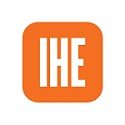How Gainful Employment Changed Higher Ed

Inside Higher Ed
Katherine Knott
April 14, 2023
When the Obama administration released its plans to measure whether some graduates were gainfully employed, Katy Perry’s “California Gurls” was the top song on the radio, Apple was on its fourth iPhone and for-profit chains ITT Technical Institute and Corinthian Colleges were still enrolling students.
Nearly 13 years later, former president Obama’s vice president is gearing up to release his own version of gainful employment regulations this month. Higher education lobbyists and analysts expect the proposed rule to be tougher than the one the Obama administration ultimately put into place, leading to more programs failing—and possibly losing their access to federal financial aid.
The issue, which has become a perennial political football, measures whether programs at for-profit institutions as well as nondegree programs in any sector are preparing students for employment—largely by looking at a students’ debt load and earnings.
The rule—finalized in 2014—was a key part of the Obama administration’s efforts to hold for-profit colleges accountable, though only one year of data was ever released. Former education secretary Betsy DeVos stopped enforcing the rule and scrapped it altogether in 2019.
Still, the decade-old notion and a 2014 policy that was never fully carried out have continued to leave a mark on higher education, from the federal data available on programs to the conversations about how to measure the value of a college degree. Before the gainful conversations, program-level earnings and debt data didn’t exist.
“Before, schools had to use their best guess about which programs were working and which weren’t,” said Clare McCann, a higher education fellow at Arnold Ventures, a philanthropy, who previously worked in the Education Department during the current administration. “Students had to use their best guesses about which programs would pay off and which wouldn’t, and then suddenly—through gainful employment and then later through the College Scorecard—all of those numbers became very real.”
Continue Reading
Share







